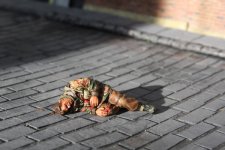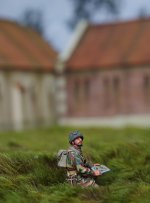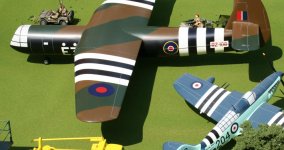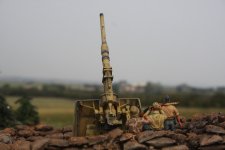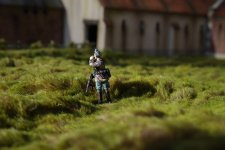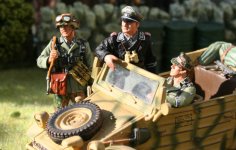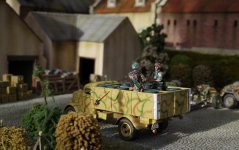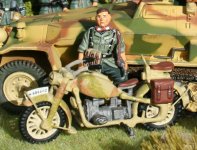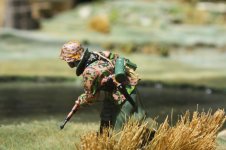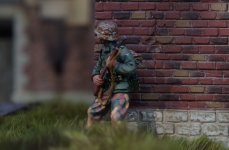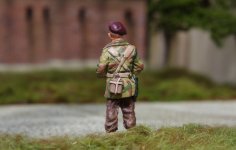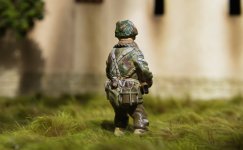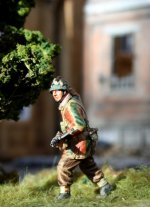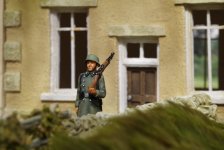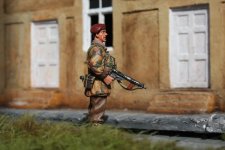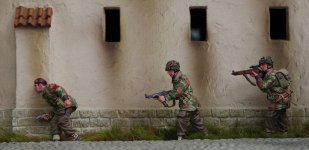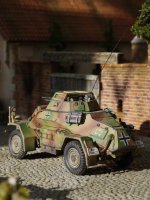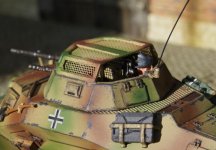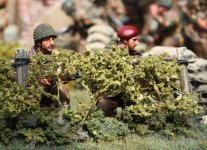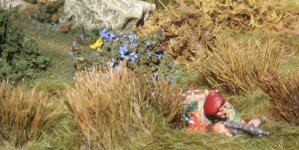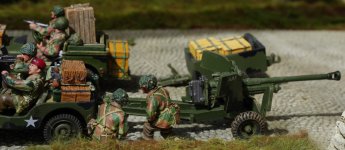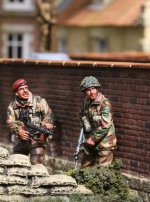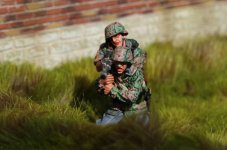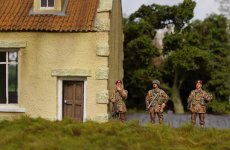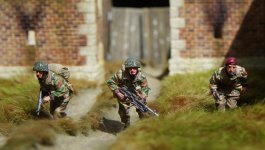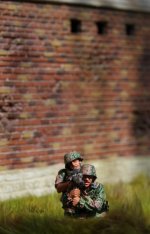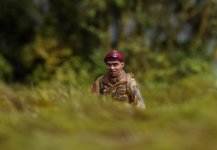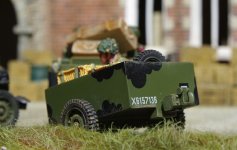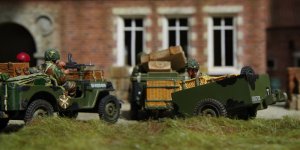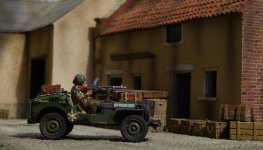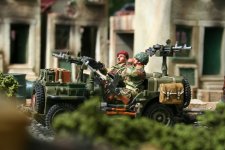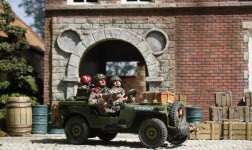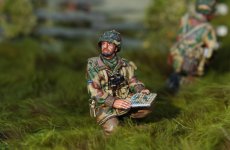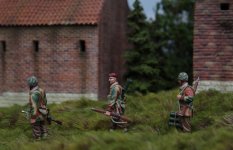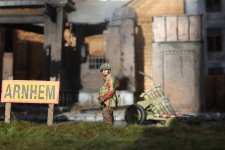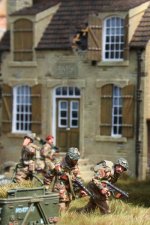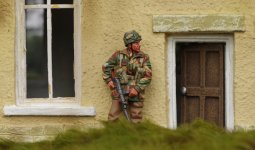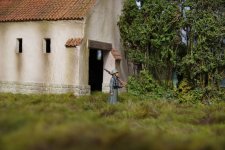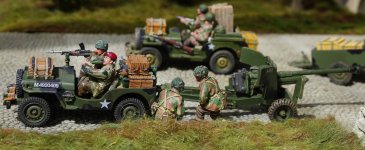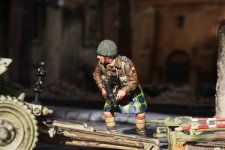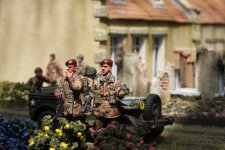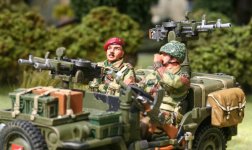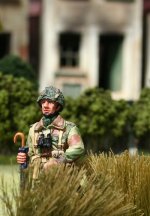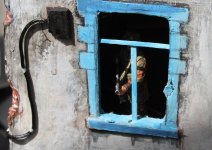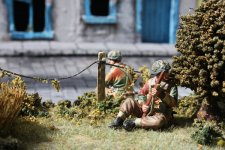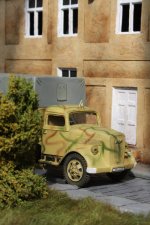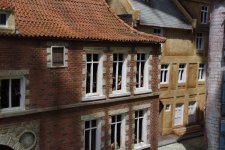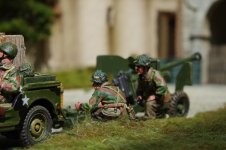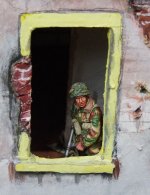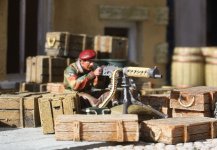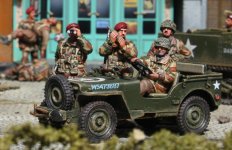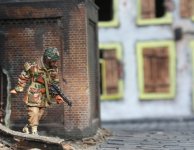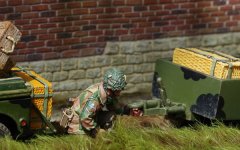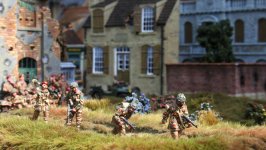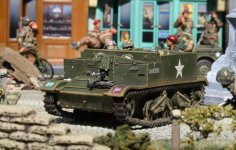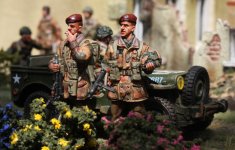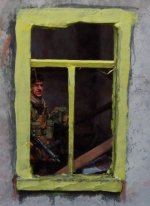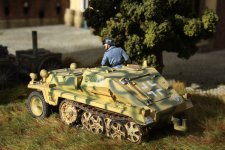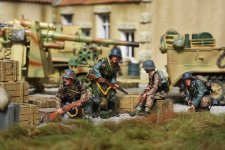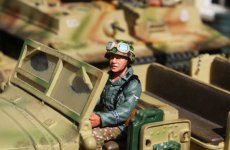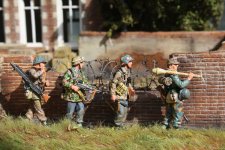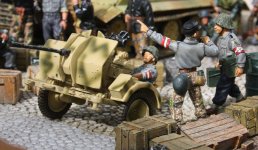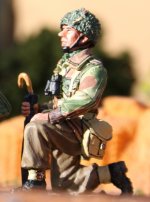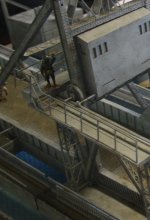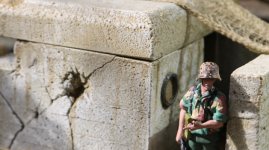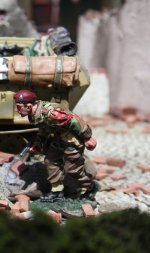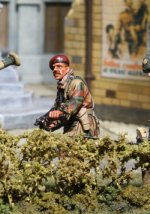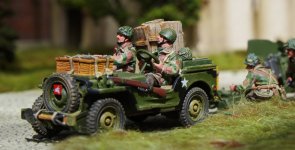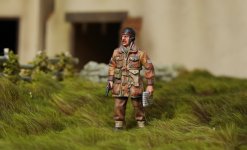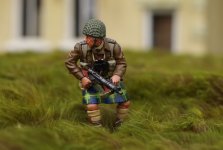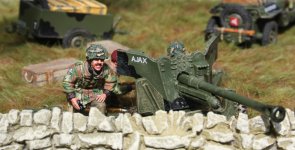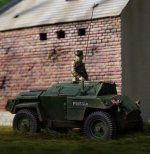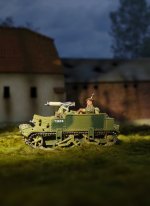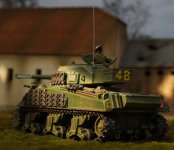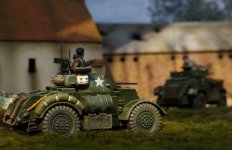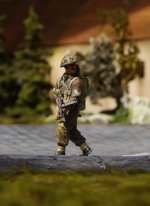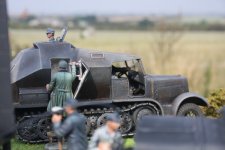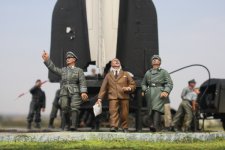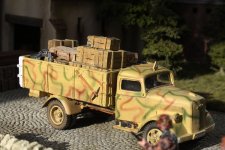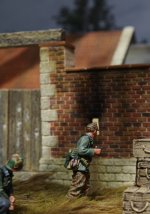panda1gen
Colonel
- Joined
- Jul 29, 2005
- Messages
- 8,138
Ref: Arnhem 1944, the Airborne Battle by M. Middlebrook
Major Dover gave Lieutenant Peter Barry's No. 9 Platoon the task of capturing the railway bridge. No. 8 Platoon would be the support, putting down smoke-bombs with its 2-inch mortar. Peter Barry recalled,
“While we were waiting behind a bank, I saw a man run out from the other side of the bridge to the centre and saw him bend down and do something. He was dressed in black, with a German Army cap on.
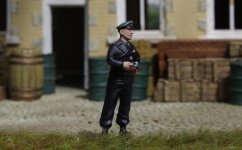
We were about 500 yards away. I gave a fire order to the Bren, but the German ran off without being hit.
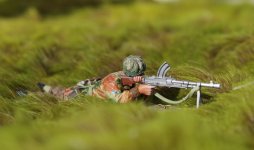
He had obviously done what he was going to do and escaped. Then the company commander came up and said I was to take a section forward and capture the north end – our end - of the bridge. So I took a section of nine men forward with me, leaving the other two sections to give cover. It was wide-open country. We reached the north end of the bridge and climbed up the embankment.
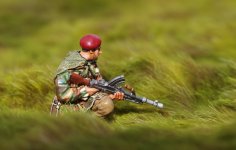
We had got there without any trouble, and I told the men that we might as well carry on and capture the whole bridge. I looked back to see if they would follow me. Only one man said no, shaking his head as though I was a bloody fool, and I don't blame him; but he came.
We threw a smoke grenade; unfortunately the wind was in the wrong direction, but it gave us some cover. It was quite a long bridge. We ran across, as fast as we could, through the smoke. We were running on the metal plates, and our hobnailed boots made a hell of a clatter. We got about fifty yards and then needed a pause; we had a lot of equipment on and soon got short of breath. So I told them to get down. We were just above the water by then.
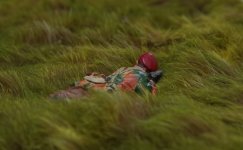
The centre span of the bridge exploded then, while we lay there, and the metal plates right in front of me heaved up into the air. It was lucky that we had stopped when we did, otherwise we would have all been killed; no one was injured by the explosion.
Then I felt something hit my leg; I looked back and asked if anyone was shooting. They all said, 'No'; it was a German bullet. Next I felt a searing shot through my upper right arm, and it seemed to become disconnected; it went round and round in circles; the bone had been completely severed. There were only a few shots, but whoever was firing certainly picked me out as a leader and hit me”.
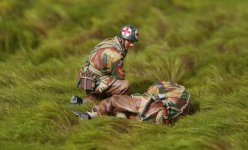
Major Dover gave Lieutenant Peter Barry's No. 9 Platoon the task of capturing the railway bridge. No. 8 Platoon would be the support, putting down smoke-bombs with its 2-inch mortar. Peter Barry recalled,
“While we were waiting behind a bank, I saw a man run out from the other side of the bridge to the centre and saw him bend down and do something. He was dressed in black, with a German Army cap on.

We were about 500 yards away. I gave a fire order to the Bren, but the German ran off without being hit.

He had obviously done what he was going to do and escaped. Then the company commander came up and said I was to take a section forward and capture the north end – our end - of the bridge. So I took a section of nine men forward with me, leaving the other two sections to give cover. It was wide-open country. We reached the north end of the bridge and climbed up the embankment.

We had got there without any trouble, and I told the men that we might as well carry on and capture the whole bridge. I looked back to see if they would follow me. Only one man said no, shaking his head as though I was a bloody fool, and I don't blame him; but he came.
We threw a smoke grenade; unfortunately the wind was in the wrong direction, but it gave us some cover. It was quite a long bridge. We ran across, as fast as we could, through the smoke. We were running on the metal plates, and our hobnailed boots made a hell of a clatter. We got about fifty yards and then needed a pause; we had a lot of equipment on and soon got short of breath. So I told them to get down. We were just above the water by then.

The centre span of the bridge exploded then, while we lay there, and the metal plates right in front of me heaved up into the air. It was lucky that we had stopped when we did, otherwise we would have all been killed; no one was injured by the explosion.
Then I felt something hit my leg; I looked back and asked if anyone was shooting. They all said, 'No'; it was a German bullet. Next I felt a searing shot through my upper right arm, and it seemed to become disconnected; it went round and round in circles; the bone had been completely severed. There were only a few shots, but whoever was firing certainly picked me out as a leader and hit me”.



